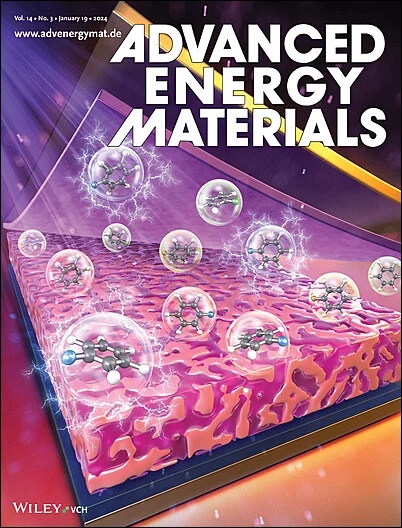Full‐Dimensional Penetration Strategy with Degradable PEAI Enables 8.21% Efficiency in Bulk Heterojunction Sb2S3 Solar Cells
IF 26
1区 材料科学
Q1 CHEMISTRY, PHYSICAL
引用次数: 0
Abstract
Antimony trisulfide (Sb采用可降解PEAI的全尺寸穿透策略可使体异质结Sb2S3太阳能电池的效率提高8.21%
三硫化锑(Sb2S3)是一种很有前途的低成本光伏材料,但实际的Sb2S3太阳能电池存在多种缺陷、各向异性输运和界面能级不匹配,将功率转换效率(η)限制在6% ~ 7%。本文提出了一种可降解的全尺寸渗透钝化策略,使用苯乙基碘化铵(PEAI)来协同解决这些问题。非晶Sb2S3薄膜的PEAI预处理实现了[hk1]取向结晶,全维缺陷钝化(体和界面),以及通过Cd - I和Sb─I键合实现双界面能级重建。PEAI降低了CdS的表面能,并优先吸附在Sb2S3(211)平面上,促进了[hk1]取向,增强了载流子输运。此外,穿透PEAI导致载流子寿命增加3.7倍,验证了缺陷抑制的有效性。所得的体异质结(BHJ)太阳能电池的η值达到8.21%,是BHJ Sb2S3太阳能电池的最高效率。这项工作建立了一个四要素集成的范例(缺陷钝化、方向控制、能级优化和架构设计),为高效、可持续的光伏发电提供了一个通用的路线图。
本文章由计算机程序翻译,如有差异,请以英文原文为准。
求助全文
约1分钟内获得全文
求助全文
来源期刊

Advanced Energy Materials
CHEMISTRY, PHYSICAL-ENERGY & FUELS
CiteScore
41.90
自引率
4.00%
发文量
889
审稿时长
1.4 months
期刊介绍:
Established in 2011, Advanced Energy Materials is an international, interdisciplinary, English-language journal that focuses on materials used in energy harvesting, conversion, and storage. It is regarded as a top-quality journal alongside Advanced Materials, Advanced Functional Materials, and Small.
With a 2022 Impact Factor of 27.8, Advanced Energy Materials is considered a prime source for the best energy-related research. The journal covers a wide range of topics in energy-related research, including organic and inorganic photovoltaics, batteries and supercapacitors, fuel cells, hydrogen generation and storage, thermoelectrics, water splitting and photocatalysis, solar fuels and thermosolar power, magnetocalorics, and piezoelectronics.
The readership of Advanced Energy Materials includes materials scientists, chemists, physicists, and engineers in both academia and industry. The journal is indexed in various databases and collections, such as Advanced Technologies & Aerospace Database, FIZ Karlsruhe, INSPEC (IET), Science Citation Index Expanded, Technology Collection, and Web of Science, among others.
 求助内容:
求助内容: 应助结果提醒方式:
应助结果提醒方式:


